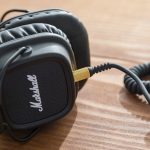
How to Choose Headphones Impedance
There are so many different headphone models on the market today. Faced with the problem of choosing the right model, it is important to know what this or that headphone parameter affects. Let’s talk specifically about the impedance of the headphones.
What is an impedance?
The impedance of a headset is simply its resistance to the passage of an electric current. Theoretically, it takes into account frequency, voltage, current, and power. It goes in the opposite direction of the volume generated by the headphones. The higher the volume generated, the lower the impedance of the headphones. By providing a lot of energy, the headphones, therefore, have a very low impedance. Therefore, if the impedance is high, there is a decrease in frequency feedback. This is also called mitigation.

High impedance or low impedance?
Thus, the high impedance of a headset does not essentially indicate better headphone quality. This may cause an attenuation on the return frequency of the headphones. As a result, the impedance is limited to a certain level so as not to gradually broke a portable headset. Regarding home or top rated headphones, it is also necessary to have a high enough impedance for good sound. Indeed, the impedance of headphones does not necessarily determine its good or bad qualification. It basically depends on the type or use of headphones. Note that low impedance can damage headphones, while high impedance will cause poor sound.

Impedance depending on the headphones
In practice, headphones above 60 ohms should normally be connected to an amplifier to result in better sound. Headphones at less than 60 ohms then have a lower impedance so as not to damage the battery of your device.
Portable headphones have an impedance beyond 12 oms at 32 ohms. Being a technical parameter, impedance should be studied and tested when purchasing headphones. The high impedance doesn’t exactly mean the headphones are top quality. In short, impedance is not the only factor to consider in qualifying a good helmet.
Another parameter to consider is the output power of the headphone output of your player. Expressed in Milliwatts (mW), it gives the maximum power without attenuation of a headphone output. Here below an excellent table of correspondence between output power and maximum recommended impedance:
- from 90 to 100 mW: 120 ohms;
- from 60 to 80 mW: 80 ohms;
- from 40 to 60 mW: 65 ohms;
- from 20 to 30 mW: 32 ohms; 60 ohms with slight attenuation;
- from 10 to 15 mW: 16 ohms; 24 ohms with slight attenuation;
However, the vast majority of consumer headsets on the market are designed to work with most mobile devices, without any compatibility problem but the test is the best helper for choosing correct headphones.
